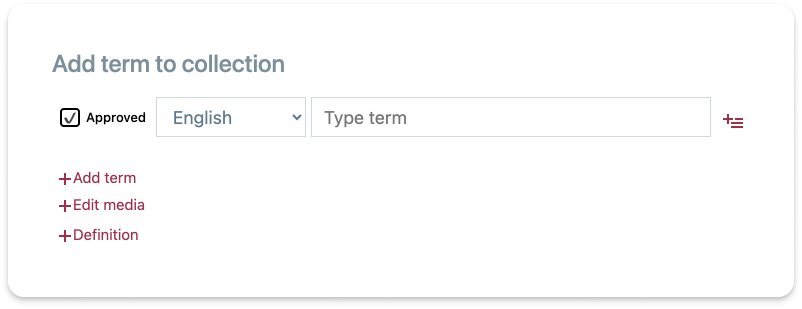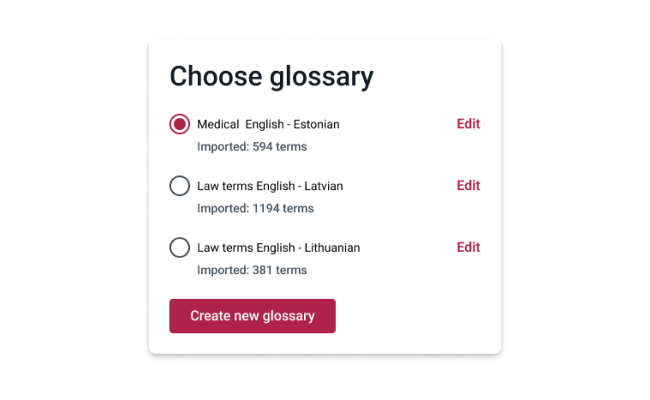Improve machine translation output with customized glossaries
Using your glossary together with machine translation automatically customizes your translations. When you define unique glossaries for each translation project, domain, and purpose, they can then be used and reused during the machine translation process. Managing, editing, and sharing your glossary collections is effortless with Tilde Term portal, which is interconnected with Tilde MT.

Choose your Tilde MT plan and get started today with a free two-week trial
Frequently asked questions
What is a glossary?
Glossaries allow you to specify how Tilde MT should translate specific words and phrases, and to define what words should not be translated (non-translatables).
Where can I use glossaries?
Glossaries can be used to translate texts and documents in Tilde MT. By installing translation plugins, you can also use them in Trados Studio and MemoQ CAT tools. Currently, glossaries are not yet supported by Tilde’s website translation tool, MS Outlook add-in, Phrase (Memsource) plugins, Tilde Translator Android, and Iphone app.
How to use glossaries?
To start using glossaries, open Tilde MT platform and select the required language pair. If this language pair supports glossaries, the glossary option appears next to the translation button.
1. Click on the button to create a new glossary.
2. Add your terms to the Tilde Term portal.
3. Then return to Tilde MT and select your glossary in the translation project.
How to update glossaries?
At any time, you can make changes to your glossaries on Tilde Term. When you have edited the glossary, synch the changes via the Tilde MT Glossary menu for an instant update. Auto-synchronization takes place every hour.
Which languages support glossaries?
Glossaries are supported for the following language pairs:
Latvian – Russian
Russian – Latvian
Russian – Estonian
Estonian – Russian
English – Estonian
Estonian – English
Latvian – English
English – Latvian
English – Lithuanian
Lithuanian – English
Estonian – Lithuanian
Lithuanian – Estonian
Estonian – Latvian
Latvian – Estonian
Latvian – Lithuanian
Lithuanian – Latvian
